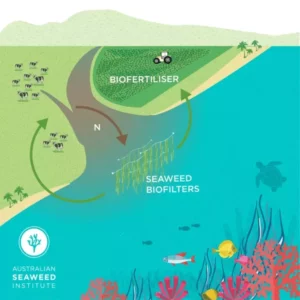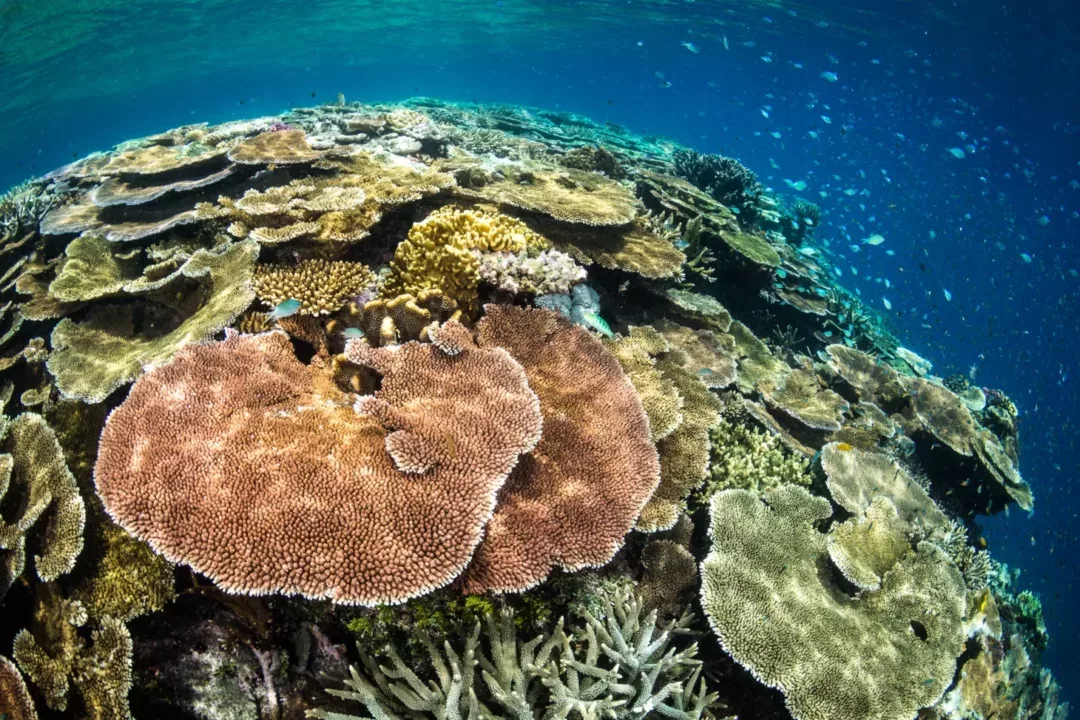Farming seaweed in targeted locations across the Great Barrier Reef could be the solution to safely soaking up excessive nitrogen that is damaging coastal ecosystems.
Every year thousands of tonnes of excess nutrients run off the land and out to the reef, reducing its resilience to recover from stress events like rising sea temperatures, ocean acidification and coral bleaching. Great Barrier Reef Foundation Managing Director Anna Marsden said poorer water quality caused by land-based runoff is a significant threat to the health of Australia’s irreplaceable ecosystem, the Great Barrier Reef.
“Sediment and pollutants running into the Reef’s waters smother coral and seagrass, are toxic to marine life and contribute to crown-of-thorns starfish outbreaks, and we must continue to work together and do better,” Ms Marsden said.

However, a new project led by the Australian Seaweed Institute in partnership with CQUniversity’s Coastal and Marine Ecosystems Research Centre (CMERC) will develop new technologies to enable seaweed biofilters to absorb nitrogen that can then be re-used as a bio-fertiliser on land. If successful, ASI chief executive Jo Kelly envisages a network of seaweed biofilters between the coast and the reef.
“Seaweed can remove vast amounts of excess nitrogen and carbon dioxide as it grows,” Ms Kelly said. “The seaweed can then be harvested for use in products such as biofertilisers, animal feed and bioplastics, delivering both an environmental solution and an economic boost.
AgriFutures Australia published the Australian Seaweed Industry Blueprint earlier this year which highlighted the opportunity for seaweed biofilters that protect the Great Barrier Reef while also generating up to $200M annually and creating 2,500 jobs by 2040.
“Using native seaweeds as biofilters is a nature-based solution that creates a circular economy model and a new bioeconomy opportunity for Queensland.”
The 18-month project is funded by the partnership between the Australian Government’s Reef Trust and the Great Barrier Reef Foundation and will run until early 2022. This phase of activity will focus on the concept design and is the first part of a multi-year project to develop this environmental solution.
“We’re proud to pioneer technologies, systems and financing options that will further support the future of the agricultural industry and of our Reef as well as help to reach the targets set out by the Reef 2050 Water Quality Improvement Plan. This innovative project will add to the more than 60 Reef-saving projects we are delivering right now with over 65 project delivery partners.” Ms Marsden said.
CQUniversity’s CMERC director Emma Jackson is leading the seaweed biofilter research from CMERC’s state-of-the-art facility located in the Port of Gladstone.
“At CMERC we like to work with nature to identify practical solutions that will build an economically and environmentally sustainable future, this project exactly fits within that approach and has huge potential to deliver benefits to both the environment – both on land and sea – and to regional communities.” Dr Jackson said.
Source Australian Seaweed Institute press release.

